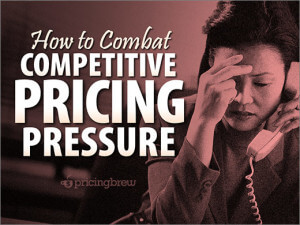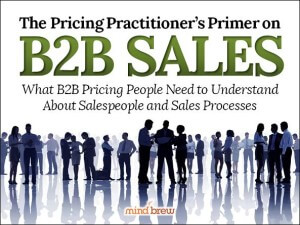In a recent newsletter article, I attempted to make the case that “competitive pricing pressure” is actually a bit of a misnomer—because all pricing pressure is driven by customers rather than competitors. In the article, I pointed out how our competitors’ pricing actions and behaviors are really only relevant when and if our customers and prospects deem them to be relevant.
In other words, if a price falls in a forest and there’s no one around who actually cares…bad turn of a phrase, but you get the idea.
Recognizing that pricing pressure is largely about our customers’ perceptions, we can then get more specific about what might affect those perceptions. Why might our customers and prospects determine that our competitors’ pricing is relevant to their business dealings with us? Why would they care that our competitors are offering a 5% lower price than we are?
Here are five potential answers that come to my mind:
- They believe that our offerings are all the same and interchangeable.
(Our differential value case isn’t clear or compelling enough.) - Our value-adds and differentiators just aren’t that important to them.
(Our targeting is inaccurate or our NPD processes are weak.) - We’ve given them reasons to look for greener pastures elsewhere.
(Our customer service and retention efforts are lacking.) - They’ve been trained to pretend that it matters, even when it doesn’t.
(Our ability to recognize negotiation tactics needs shoring up.) - Our own actions have reinforced the relevance of competitors’ pricing.
(Our reactionary behaviors are actually working against us.)
When you think hard about these questions as they relate to your specific business, you’ll probably come up with lots of different answers. Some of your hypotheses will be wrong. But many will be right. Some of the drivers of customer perceptions that you identify may be largely out of your control. But most of them will be “fixable” to some extent.
The point of the exercise is to explore the possibilities, identify what’s in your control, and take proactive steps to manage the customer perceptions that lead to pricing pressure. While it might be a lot easier to blame competitive actions, the real sources of pricing pressure are usually much closer to home…and much more manageable than we might think.
PS: Speaking of pricing pressure, our research team has a question for you, dear reader. Please take two seconds to complete the PulsePoll below…I promise it won’t hurt a bit.














